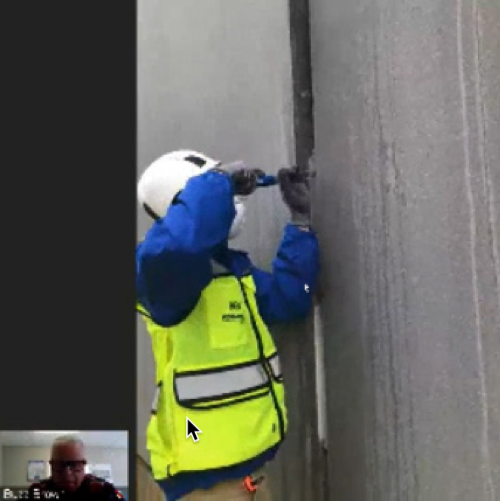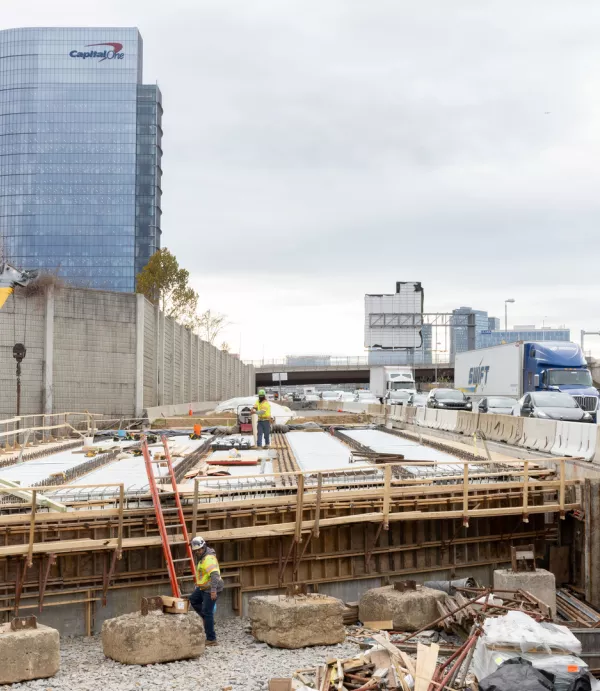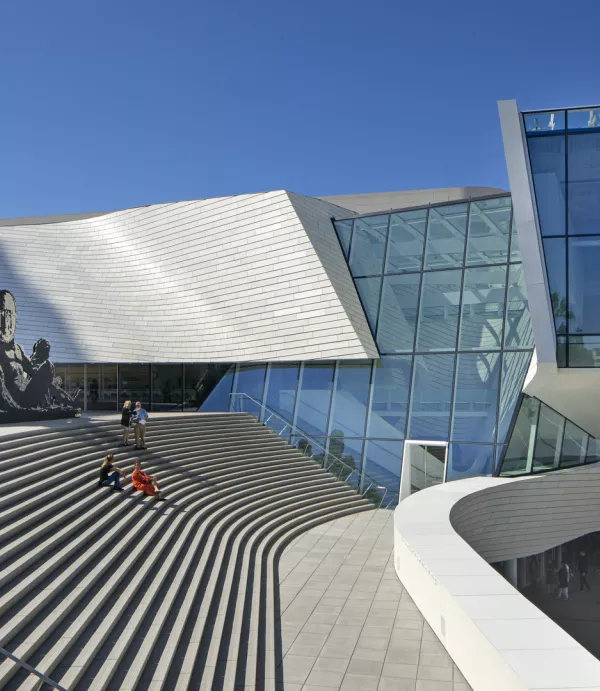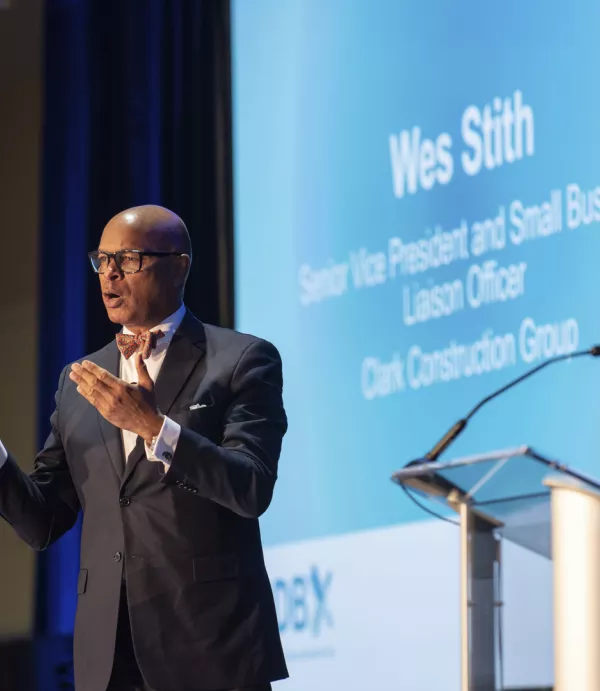Remote Jobsite Inspections and Check-Ins Keep Work Moving Forward
June 8, 2020
When face-to-face inspections were no longer feasible due to social distancing requirements, Clark’s project teams adapted with technology solutions to communicate jobsite conditions with remote stakeholders and maintain productivity.
At the Howard County Circuit Courthouse project in Columbia, Maryland, the team recently began installing the structure’s precast and punch window façade. As part of their quality assurance protocols, the team had to perform a joint sealant pull test in order to ensure proper adhesion of the sealant to the building’s façade. In the midst of the COVID-19 pandemic, the team needed to find a solution that would allow for key stakeholder participation during testing while minimizing the number of participants onsite.
In order to limit the number of in-person attendees, the team made accommodations for remote attendance through the use of virtual meeting capabilities. On site, Will Smith, an engineer at Clark, live-streamed the test with in-person participation from the caulking trade representative, manufacturer testing representative, and building envelope commissioning agent. Representatives from HOK, the project’s architect, along with the County's independent inspector, an independent building expert, and consultants all participated virtually. The virtual meeting was also recorded so that any team members who were unable to attend the meeting could view the test later. In the future, the team plans to use this same approach to host a remote discussion of a façade mockup.

As clients and local inspection authorities began limiting visits to project sites, Clark implemented this virtual capability on projects throughout the country. However, transitioning from on-site meetings to a remote format is not without challenges. The size and layout of jobsites sometimes results in spots with poor connectivity. To address this, Clark’s IT professionals deployed a cellular repeater solution that enhances cellular coverage in areas where a connection is interrupted. The device fits into a rugged case and consists of both receiving and transmitting antennas mounted on tripods, as well as a powered repeater. The receiving antenna is placed in an area where strong cellular coverage is available and is connected to the repeater. The broadcast antenna can easily be relocated as the inspection progresses through different areas of the building, providing uninterrupted service and facilitating seamless virtual meetings.
As projects across the country have transitioned to virtual meetings, many have noted increased efficiency and flexibility for project teams. Remote attendees value the time saved traveling to and from the project, and the ability to review a recording of the meeting afterward ensures information is available to all stakeholders, regardless of their ability to attend the live meeting. After implementing remote capabilities for sample installation review meetings on his project, Tyler Bishop, a project manager at Clark, thinks the meeting format could be around for the long haul. “Even when remote meetings are no longer necessary, having the ability to capture the questions and input of stakeholders regardless of their physical location keeps us all on the same page moving forward.”


